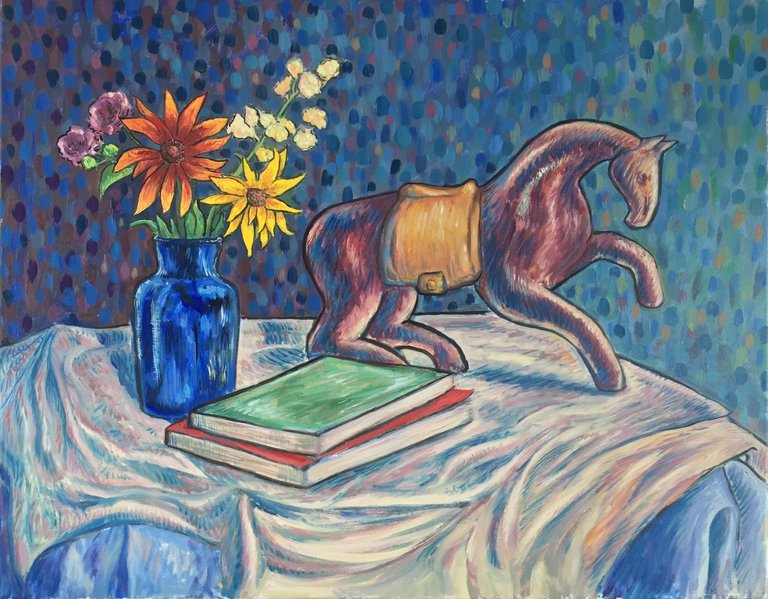
In the process of an ambitious project, a diptych on five-foot-tall canvas, I took a three-day break to complete this still life. It all began one afternoon in late August when I stopped at the Westport Farmer's Market on the way back from a run. With the flowers in hand, I quickly set up the still life, and proceeded to execute the composition in a particular style.
THE INFLUENCE OF THE POST-IMPRESSIONISTS
This style, known as Cloissonism or Synthetism, was developed in the late 1890s by famous artists such as Vincent Van Gogh and Paul Gauguin. Other lesser-known proponents were Maurice Denis, Cuno Amiet and Emile Bonnard, who have all influenced me greatly. The use of strong colors, visible paint strokes and thickened shapes, broadly outlined seems to come naturally to me.
I also find that this aesthetic blueprint allows me to paint with the pace and relaxed mood I desire; it is unfettered by strict realism, and allows for much artistic interpretation. Furthermore, this template is ideal for an artist who seeks to represent everyday objects or figures while charging them with personal, or universal (that is, archetypal) significance.
read more at: https://roskogreen.squarespace.com/blog/2017/10/7/still-life-alchemy
This is really great. Van Gogh is one of my favorite painters. Thank you for sharing, @roskogreen :)
Thank you! Van Gogh was a genius, but little do people know that their were a whole bunch of painters who developed the Cloissonism style that Van Gogh is so particularly famous for. In fact, it was Pierre Bonnard and Pual Gauguin who wrote letters in Pont Aven, in correspondance with Van Gogh in Southern France, that the style really took off.